Best Smart Locks of 2022
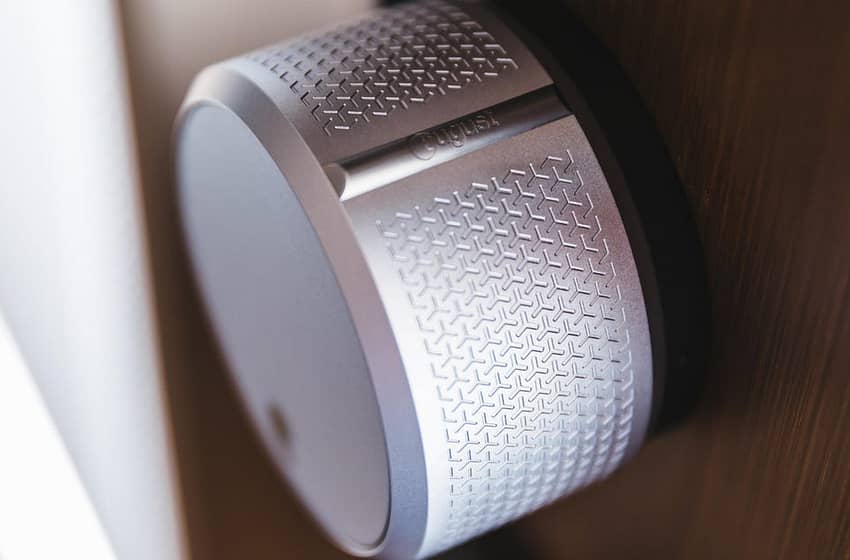
In this article:
When it comes to home automation or smart homes, the last thing you might think about are smart locks. Smart locks may not be the most exciting gadgets on the market, but since they protect your home from being invaded and your favorite gadgets from being stolen, they’re probably the most important. Smart locks have been around for a very long time, but they’ve seen some big advancements over the years.
Motorized deadbolts and built-in connectivity to your home network or phone are two of the convenient features available with many modern smart locks. They can also be a big help if someone needs to drop something off while you’re out of the house, if you have houseguests or renters who need access to your home or if you can’t seem to remember whether you locked the door on your way to work in the morning.
The features that define the best smart lock for your home will differ depending on the door in question and the people who walk through it. Smart locks that can be retrofitted to the traditional lock instead of replacing the existing deadbolt are a must-have for some people, especially apartment-dwellers. Others will care more about user codes that they can share with houseguests, or extra features like fingerprint scanners, auto-locking and unlocking or compatibility with Apple HomeKit.
We’ve tested a wide number of smart locks over the years, including some of the most recent models to hit the market in 2022. Our favorites of the bunch are listed below, and we’ll update this page regularly as our testing continues.
Black Friday deals are here: Check often for updates on the best Black Friday deals on smart home tech this season.
Best smart locks of 2022
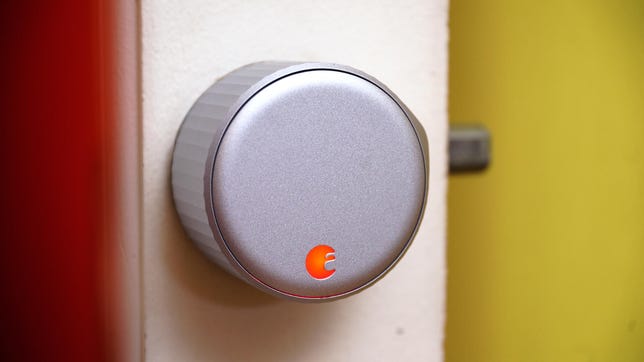
Read our August Wi-Fi Smart Lock review.
You’re receiving price alerts for August Wi-Fi Smart Lock
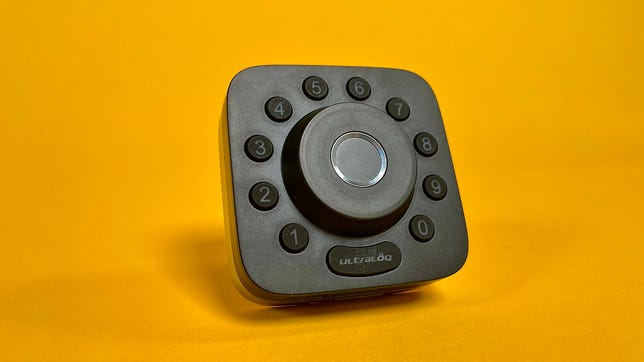
Ry Crist/CNET
If you’re renting out your place using a service like Airbnb, then a smart lock makes a ton of sense to make it easy for guests to get in. My recommendation would be to get a smart lock that supports coded entry — just give your guests a code that only works for the duration of their stay, and they’ll be able to get in and out without needing to use a key or download an app.
The coded smart lock I like the best is the Ultraloq U-Bolt Pro. With physical buttons that work regardless of the weather (or whether or not the user is wearing gloves), it’s about as foolproof as coded locks get. It features one of my favorite smart lock designs, with a built-in fingerprint sensor and a sneaky front face that flips down to reveal the keyhole. Plus, the lock’s built-in Wi-Fi radio was a top performer in my range tests, which might make it an especially good pick for a door that’s a couple of rooms away from your router. You can sync it with Alexa or Google Assistant for voice controls, too, though Apple HomeKit isn’t supported.
The U-Bolt Pro comes in a variety of models — I like the newest version tested and pictured here, with the fingerprint scanner, an open/closed door sensor, and built-in Wi-Fi for remote access on your phone and compatibility with Alexa and Google, but it’s a bit expensive at $280. Fortunately, you can save some money by going with an identical-looking Bluetooth model that ditches the open/closed sensor and uses an external, plug-in Wi-Fi bridge for a total of $179. Don’t care about the fingerprint sensor? You can ditch that too, bringing the price all the way down to $149.
You’re receiving price alerts for Ultraloq U-Bolt Pro with Wi-Fi

Tyler Lizenby/CNET
August’s third-gen Smart Lock and Connect bundle comes with a DoorSense open-close sensor and the August Connect plug-in Wi-Fi bridge. The low-profile, retrofit design means you won’t need to replace your existing deadbolt lock and installation is easy, offering convenience for renters who might not be able to switch the existing deadbolt out at all.
With that August Connect Wi-Fi bridge pairing the lock with your home network, this version of the August lock is compatible with Google Assistant and Amazon Alexa for voice control, and you’ll find the same great remote access features in the August mobile app. About the only August feature that you don’t get here is compatibility with Apple HomeKit (sorry, Siri). Available in silver or dark gray for as little as $185, it’s the first smart lock I’d recommend if you live in an apartment and don’t want to remove your existing lock.
Editor’s note: In August 2020, PCMag and Bitdefender released a report alleging that August and Yale Android apps when working with Connect modules were vulnerable to a hack during setup mode that could give away Wi-Fi credentials. In August’s latest response to CNET, it states, “If the Connect’s firmware is up-to-date and the user’s August Android app is up-to-date, their device will not be vulnerable to the original attack even if the unit enters into setup mode.”
You’re receiving price alerts for August Smart Lock + Connect

Chris Monroe/CNET
I’m not sure that I’d want to go totally keyless at my front door, but if you’re ready to ditch that door key for good, then the Yale Assure SL belongs right at the top of your list. The small, sleek design doesn’t have a keyhole at all — instead, you’ll let yourself in using a touchscreen keypad that comes in a variety of finishes that look good on nearly every door. If the batteries ever run out, you can hold a 9V battery against a set of nodes on the bottom of the lock to give it enough juice to let you in.
Shop around, and you’ll find a variety of Yale Assure models with different kinds of connectivity and different price points. The base model costs $179, but it doesn’t feature any smarts at all — you need to purchase and install the Yale Access Upgrade kit which includes an August Connect Wi-Fi bridge for well over $100 in order to control the lock from your phone or to pair it with a voice assistant. That’s a bad value, so instead, go with the Yale Assure lock that already has Wi-Fi built in — that model doesn’t need any extra hub hardware, and it costs about $250. Another version features a Z-Wave radio instead of Wi-Fi for $230 — it might be worth considering if your home already has a Z-Wave hub that can communicate with it.
Meanwhile, Yale recently released a second-gen Assure Lock 2, with your choice of touchscreen controls or physical buttons. The version with built-in Wi-Fi supports Alexa, Google Assistant and Apple HomeKit, and costs $240. We’ll keep an eye on that one and update this rundown once we’ve had a chance to test it out.
Editor’s note: In August 2020, PCMag and Bitdefender released a report alleging that August and Yale Android apps when working with Connect modules were vulnerable to a hack during setup mode that could give away Wi-Fi credentials. In August’s latest response to CNET, it states, “If the Connect’s firmware is up-to-date and the user’s August Android app is up-to-date, their device will not be vulnerable to the original attack even if the unit enters into setup mode.”
Read our Yale Assure Lock SL Key Free Touchscreen Deadbolt review.
You’re receiving price alerts for Yale Assure Lock SL Key Free Touchscreen Deadbolt
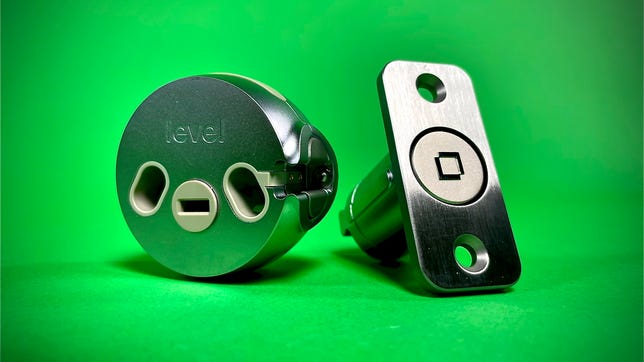
Ry Crist/CNET
If compatibility with Apple HomeKit and the Siri voice controls that come with it is a must-have for your smart lock, the bad news is that you’ll find fewer options than you’ll see with other platforms. The good news is that you’ve still got some great locks to choose from — and among them, I’d recommend starting with the Level Lock.
Available for $200 in your choice of four finishes, the Level Lock costs a little less than other HomeKit locks, and it features a clever design that packs all of the electronics into the deadbolt inside your door. That means that you won’t have a bulky thumbturn on the inside of your door or a gadgety-looking keyhole on the outside, and it also means that the Level Lock is about as quiet as smart locks get, since the motor that turns the deadbolt sits inside your door.
The Level Lock uses Bluetooth to pair with your phone, and a unique range-boosting feature worked well in our tests and allowed me to reliably control the lock from a couple of rooms away, which is something other Bluetooth locks couldn’t do. Pair it with a HomeKit hub like the Apple TV or the HomePod Mini, and you’ll be able to control it from anywhere (same goes for Alexa users — just pair it with an Echo device or another Amazon gadget that doubles as an Amazon Sidewalk bridge). There’s no Google Assistant support, but that’s really about all this smart lock is missing.
If you want to spend a little less, you could consider the Level Bolt, which offers the exact same features and the exact same hardware pictured above without the thumbturn and keyhole that go on the inside and outside of your door. Instead, that model works with your existing hardware, and that means it costs a little less at $151. On the flipside, there’s also a new Level Lock Touch Edition that adds a capacitive lock exterior that unlocks as soon as a registered user touches it — it’s expensive at $329, but we’ll update this post once we’ve tested it out to let you know if we think it’s worth the splurge.
You’re receiving price alerts for Level Lock
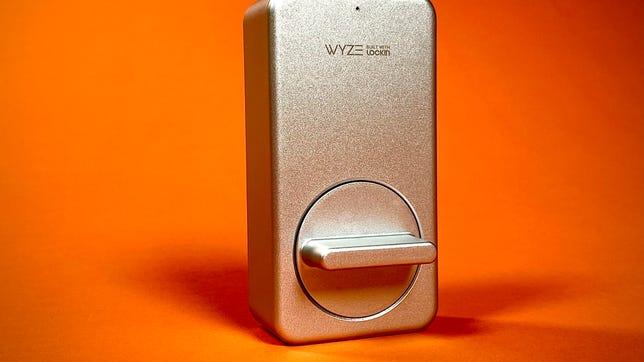
The Wyze Lock might be just what you’re looking for if you’re ready to move up to a smart lock but don’t want to spend more than $200.You get built-in Bluetooth for pairing with your phone at close range and a plug-in Wi-Fi hub for connecting from a distance or using Alexa or Google Assistant, both of which are available for just $130.For an additional $30, you can incorporate a wireless keypad accessory into the mix if you are interested in coded entry.
With a retrofit design, the Wyze Lock works with your existing deadbolt and key. It’s admittedly plain-looking on the inside of your door, but it’s easy to install and it worked well in our tests, making it a great budget pick.
You’re receiving price alerts for Wyze Lock
Other smart locks we’ve tested
In our search for the best smart lock, these are some of the other products we’ve tried out:
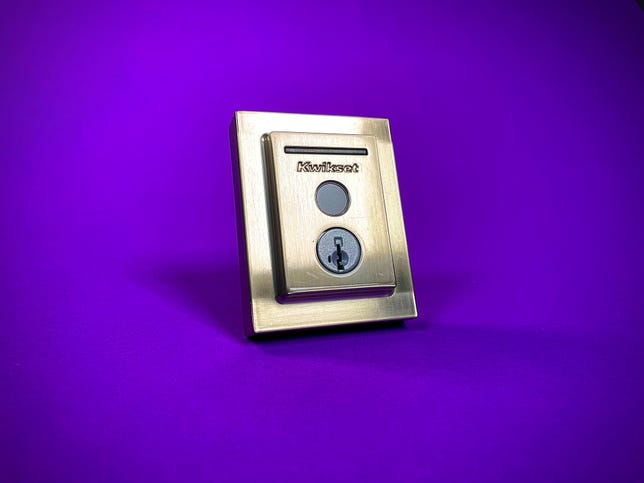
The Kwikset Halo Touch is a no-frills fingerprint lock with built-in Wi-Fi and support for Alexa or Google Assistant.
Ry Crist/CNET
Nest Yale Lock
: Nest and Yale partnered up for a Google-centric smart lock with a touch keypad. This Nest app smart door lock has the good looks of Yale’s earlier models, but it isn’t quite as capable as other keyless locks when it comes to smart home integration.
Array by Hampton Connected Door Lock
: This lock has solar-powered battery backup and built-in Wi-Fi, but it’s expensive and doesn’t have the option to work with HomeKit or Google Assistant yet.
Kwikset Halo Touch: The Halo Touch is a simple, straightforward fingerprint lock that costs $234. With built-in Wi-Fi, there’s no need for any additional hub hardware — just install it, pair it with your home network, and you’ll be all set. It was a strong performer in our tests, with a snappy, responsive fingerprint scanner and a relatively quiet design, and it supports voice controls via Alexa or Google Assistant (no HomeKit support, though). If it were me buying, I’d try to catch it on sale for less than $200, but this is definitely a smart lock worth considering if you want fingerprint access at your front door.
Kwikset Kevo Bluetooth Deadbolt
: Kwikset’s second-gen Kevo is a good Bluetooth smart lock and a simple answer to smartening your door if you don’t need remote control access. If you do, you’ll need to purchase the Kevo Plus connect module. You can use the mobile app or the key fob for keyless door entry.
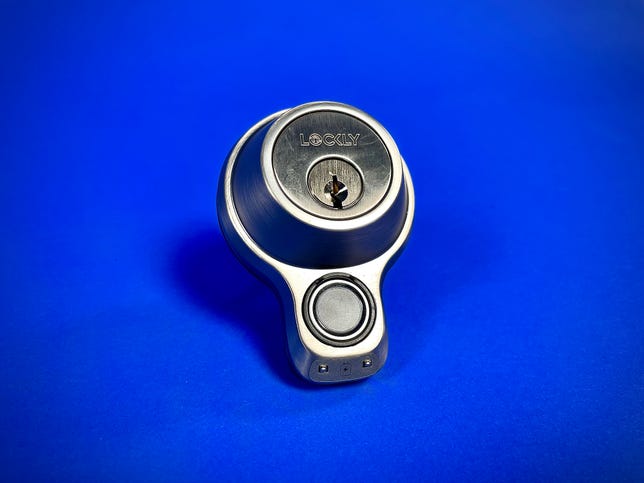
The Lockly Flex Touch is a Bluetooth smart lock with a built-in fingerprint scanner, but you’ll need to pay an extra $80 for the plug-in Wi-Fi hub that lets you control it from anywhere or pair it with a voice assistant.
Ry Crist/CNET
Lockly Flex Touch: An understated fingerprint lock, the Flex Touch looks like a standard deadbolt on the outside, apart from the small fingerprint sensor that dangles underneath. That fingerprint sensor worked great when we tested it out, but the interior part of the lock is made of faux-stainless-steel plastic that feels a bit cheap to the touch. In addition to that, you’ll need to buy an overpriced $80 plug-in Wi-Fi hub if you want to control the lock via your phone from beyond Bluetooth range.
Schlage Encode Wi-Fi Deadbolt: We liked the Encode’s simplicity when we tested it out — with built-in Wi-Fi, there’s no need for any extra hub hardware, meaning you can pair it with your home network and with Alexa or Google Assistant for voice controls as soon as you install it. It’s also compatible with Amazon Key, in case you’re interested in in-home delivery drop-offs. On top of that, it’s a really nice-looking smart lock, with a classy touchpad for coded entry and a variety of elegant finishes. It doesn’t support Apple HomeKit, though, and it’s difficult to find it on sale for less than $250, which makes it hard to recommend.
Schlage Sense Bluetooth Deadbolt
: Schlage’s Sense smart lock is affordable, but clunky and not as simple to set up as its Encode sibling. You’ll also need a Schlage lock Wi-Fi adapter to connect with Google Assistant or Alexa.
Eufy Smart Lock Touch with Wi-Fi: At a retail price of $260, Eufy’s sleek-looking, finger-scanning smart lock is too expensive for us to recommend outright, but it performed well when we tested it out, apart from a few minor hiccups during setup. With both a fingerprint scanner and a touchpad for coded entry, it’s about as versatile as smart locks get, but it’s probably more than most people need.
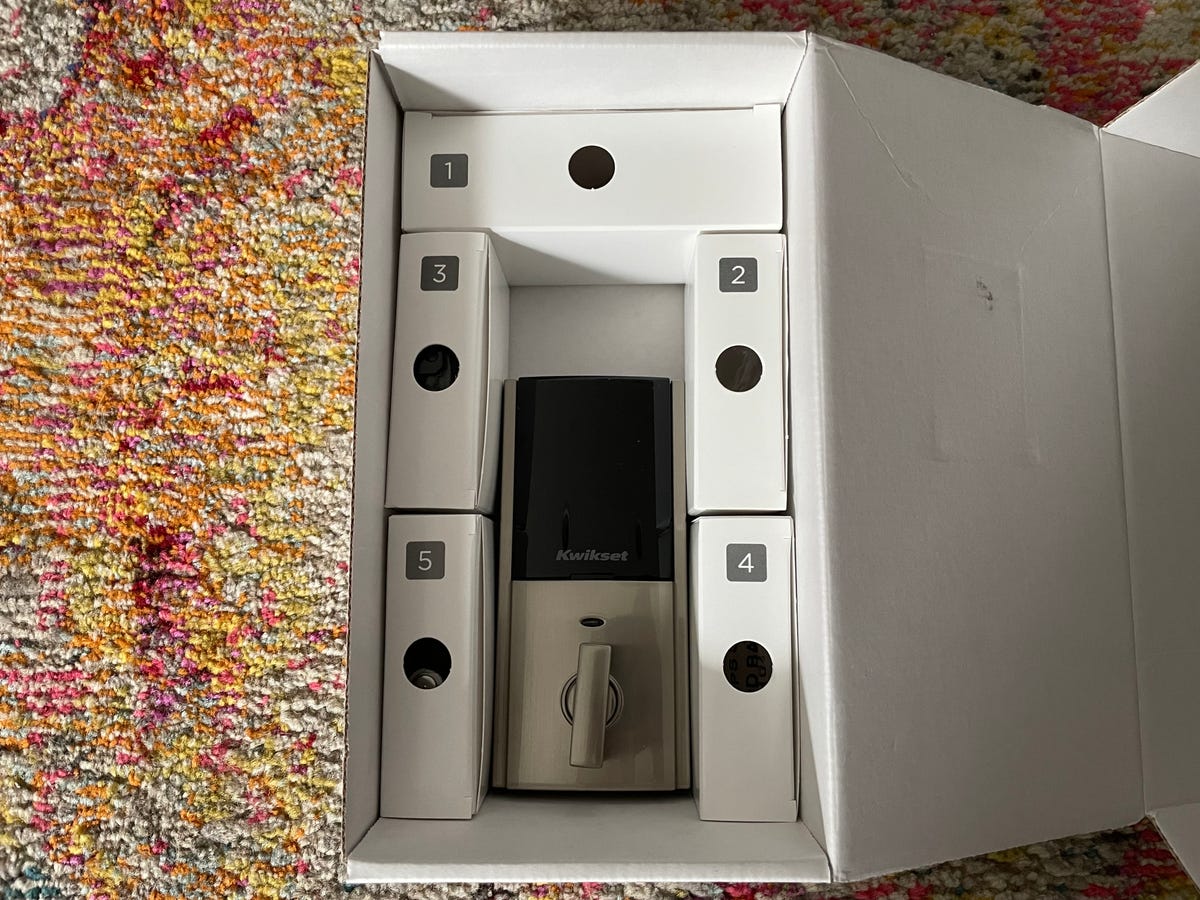
The Kwikset Halo Touch did a great job of separating the parts and screws you’ll need to use to install it, and labeling them according to each step of the process. That helps make the setup process a lot less intimidating.
How to choose a smart lock
Smart locks are a highly visible part of your home that you’ll use just about every day, so it’s important to find a reliable pick that meshes well with your smart home. Here are the factors you should be thinking about as you shop:

A retrofit smart lock like the August lock will replace the interior of your existing lock, but not the exterior keyhole or the deadbolt.
CNET
Full deadbolt or retrofit
Most smart locks will replace the entirety of your existing lock, including the interior thumbturn, the exterior keyhole, and the deadbolt in the middle. Locks like those will also come with their own keys, which will replace the ones you’re using now.
Others, like the August Smart Lock, the Wyze Lock, and the Level Bolt, are designed instead to work with at least some of your existing lock hardware. With a retrofit lock like that, you probably won’t need new keys at all, and you might not even need to swap out the deadbolt. Locks like those can sometimes be a better fit for apartments, where the building owners might not allow you to replace the entire lock.
Modes of access
Different smart locks will take different approaches to letting you in. On a basic level, most smart locks will let you lock and unlock the door wirelessly from your phone, using an app. Others add in keypads for coded entry, which can help you rely on your keys a little less while also making it easier to share access with others. Some of the newest smart locks add in touch sensitivity or fingerprint scanning to let you inside with just a tap. Apple recently added a Home Key feature in iOS15 that lets you store a digital house key in your Apple Wallet, which lets you open compatible smart locks using the NFC radio in your iPhone or Apple Watch.
It’s probably overkill to pay up for a smart lock that offers all of that, so it’s fine to dial in on the mode of access that interests you most. You’ve got a diverse mix of options these days.
Platform compatibility

The Schlage Encode Plus is the first smart lock to support Apple Home Key. Similar to Apple Pay, Home Key lets you unlock your door using the NFC radio in your iPhone or Apple Watch.
Schlage
If your household includes multiple types of smart home devices, then your best bet is to control them all from a single smart home platform — that way, you won’t need to juggle multiple apps to keep everything automated. The most popular picks are Amazon Alexa, the Google Home app and the Google Assistant voice controls that come with it, and Apple HomeKit, which brings Siri into play. Samsung SmartThings is another option for a hub-centric smart home.
Whichever you end up using, make sure that your smart lock is compatible. You’ll find plenty of locks that work with Google and Alexa, and slightly fewer that work with Apple HomeKit, but you shouldn’t have any trouble finding multiple options for any of them. Just make sure that you have what you need to connect — a Bluetooth smart lock might require a Wi-Fi bridge of some sort before it can connect with a larger platform, and some locks require a specific hub device in order to connect, like an Amazon Echo Plus or an Apple HomePod Mini.
Security and privacy
Smart locks aren’t quite as data sensitive as devices with built-in cameras and microphones, but you’ll still want to make sure that you’re keeping things secure. Most, if not all of your options will use some form of encryption to keep the wireless transmissions between your lock and your phone or home network secure — you should also look for locks that use two-factor authentication to keep your account safe from malicious logins. And, as with any connected device in your home, you’ll want to be sure to keep your lock updated to the latest firmware, and to set a strong password in the app.
As for lockpicking and other physical concerns, you can look for the lock’s ANSI grade to get a sense of its durability, and how well it might stand up against a brute force entry attack. ANSI grade 3 is the most basic rating, but a growing number of smart locks offer ANSI grade 2 or grade 1 ratings, which tell you that they’re built with commercial-grade durability. If you’re concerned about forced entries, a lock like that might be a good investment.
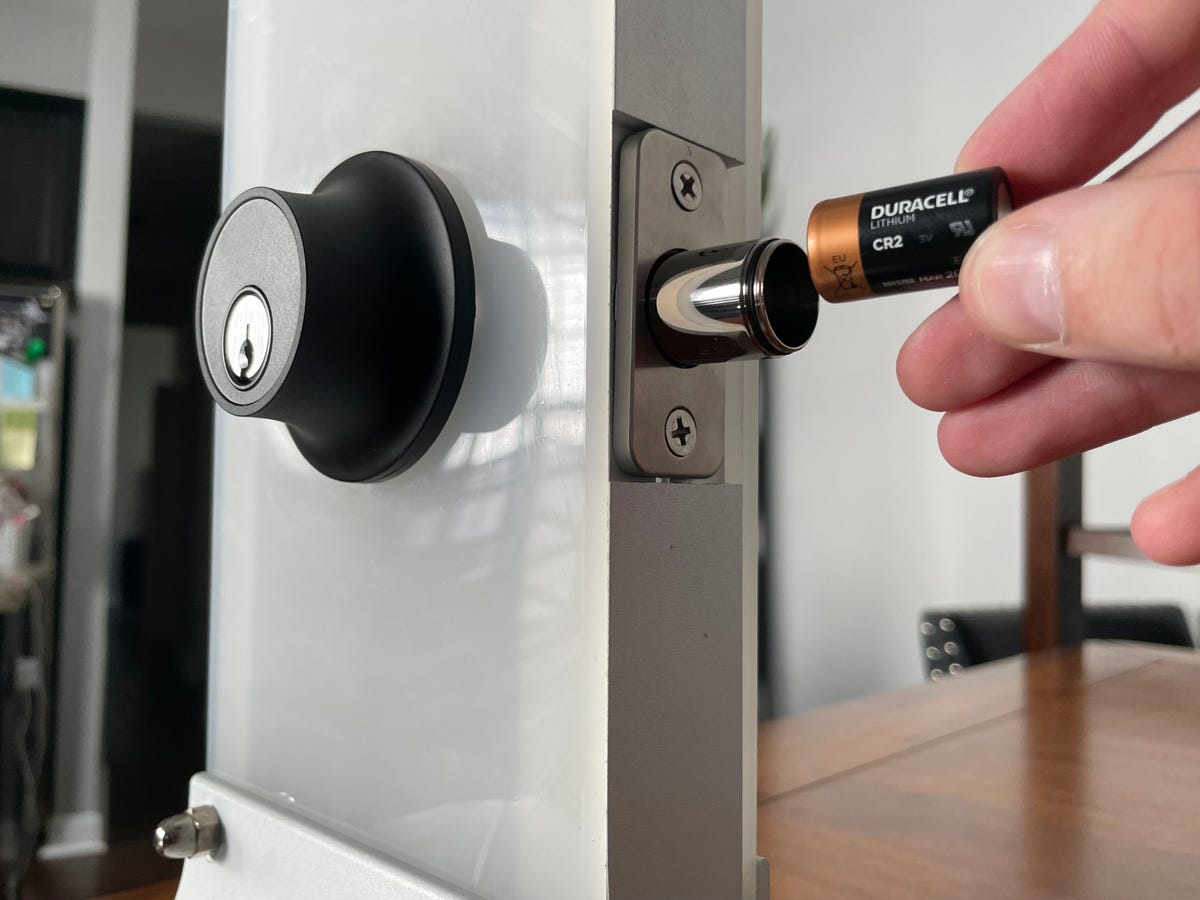
The Level Lock runs off of a single CR2 battery that hides neatly in the deadbolt itself.
Design considerations
Your smart lock is going to sit right on the front of your home’s exterior, so it’s worth aiming for something you won’t hate looking at. Some smart locks go out of their way to show off their gadgety features with light-up touchscreens, color-coded LED indicator lights and tech-minded designs. Others take the opposite approach, doing their best to blend in and look just like a standard lock, from the outside at least. Picking a preference between the two approaches will help you narrow your options.
You’ll also want to consider how the lock stays powered. Most smart locks will run off four AA batteries, but some take a different approach. The Level Lock, for instance, runs off of a single CR2 battery that sits inside of the deadbolt itself. Meanwhile, Eufy’s touchscreen smart lock runs off of a rechargeable battery pack.
Smart lock FAQs
How secure are smart locks?
Smart locks from major developers, like Yale and Schlage, are reliable security devices — but only if you use them correctly. In the same way a lock three feet from a key hidden under a doormat isn’t very secure, a smart lock with the PIN 1-2-3-4 won’t be very secure. Smart locks can even be more secure than conventional locks, since keys are easier to lose than, say, your fingers, if you’re using a fingerprint lock.
Why are smart locks so expensive?
Like most smart home tech, smart locks are getting more affordable all the time — but that doesn’t mean they’re cheap. Between the conventional hardware (which often includes a deadbolt and other parts of the lock mechanism), the “smart” hardware (which includes computer chips and various kinds of radios) and the software (which includes digital security measures like encryption), a lot goes into a smart lock. So finding one for under a hundred bucks, which isn’t unusual these days, is actually a solid deal.
Can smart locks be hacked?
Smart locks, like any Wi-Fi-connected device, can be hacked. But as long as you’re finding smart locks from reliable developers, the communications that would allow a hacker to trigger the lock should be thoroughly encrypted — making hacking pretty difficult. It’s important to keep in mind, too, that robberies are often crimes of convenience. So unless you live on a totally secure compound, protecting one-of-a-kind jewels, an unlocked window or an open garage door is a more likely point of entry than your theoretically hackable smart lock.
While smart lock hacking isn’t much of a risk to your individual home’s security thanks to encryption, that doesn’t mean smart locks pose no risks. Battery-powered smart locks can lead to problems in the long run if you’re not diligent about keeping them powered. Smart lock hacking can also pose a larger societal problem when unsecured smart home gadgets are hacked en masse to carry out distributed denial-of-service attacks against internet-dependent institutions, such as banks. You can mitigate risks like those by setting strong passwords for the apps that control your smart home, and by using security-minded features like two-factor authentication.





